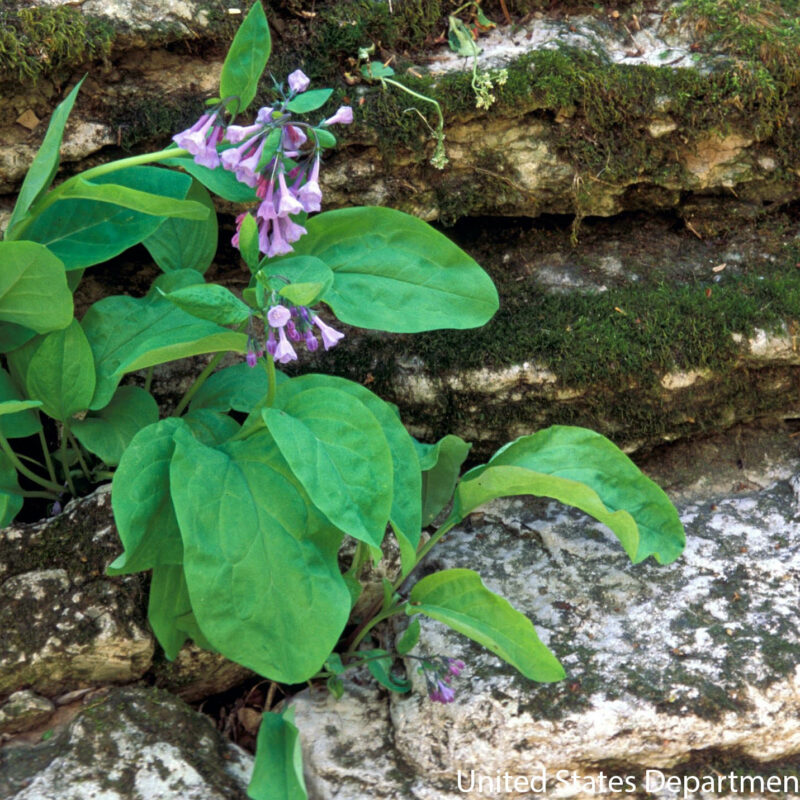Virginia BluebellsMertensia virginica
An erect, showy, colony-forming native perennial herb that grows 1-2' tall and is a spring ephemeral. This species is well suited for massed, undisturbed areas in moist, shady woodlands, wildflower or native plant gardens, woodland water gardens, decorative plantings, and shady rain gardens. It can be spread into borders or rock gardens as well.
USDA symbol: MEVI3
General Information
| Plant Type | Forb |
|---|---|
| Height | 2 feet |
| Light Exposure | Part Sun, Shade |
| Soil Moisture | Medium |
| Bloom Color | Blue |

Tolerances
| Flooding / Inundation Tolerance | Low |
|---|---|
| General Resilience | 5 |
| Salt Tolerance | Low |
| Stress Tolerance | General Disturbance |
Pollinator Value: Very High
| Bloom Months | May to June |
|---|---|
| Pollinator Benefit | Insect Pollinated, Provides Nectar |
Project Planning
| Project Type | Erosion Control, Rain Garden, Restoration, Shoreline Buffer, Upland Buffer |
|---|---|
| Coefficient of Conservatism | 6 |
| Herbivore Sensitivity | Medium |
| Lifespan | Perennial |
| Rate of Spread | Slow |
| Soil Stabilization | Shallow |
| Vegetative Reproduction | Clonal |
Range
| County | Dodge, Fillmore, Freeborn, Houston, Mower, Olmsted, Steele, Wabasha, Winona |
|---|---|
| Ecoregion | Driftless Area, North Central Hardwood Forests, Northern Lakes and Forests, Western Cornbelt Plains |
| Approximate Eco Province | Eastern Broadleaf Forest, Laurentian Mixed Forest, Prairie Parkland |
